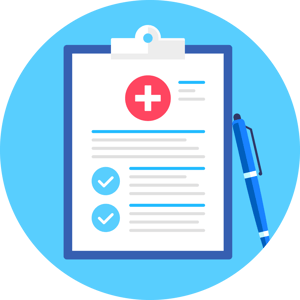 It’s an uphill climb through uncharted territory, but we are gaining ground on an industry-wide eConsent framework. My colleagues and I had the opportunity to participate in the August 16th eConsent Discovery Session hosted by the Office of the National Coordinator for Health IT.
It’s an uphill climb through uncharted territory, but we are gaining ground on an industry-wide eConsent framework. My colleagues and I had the opportunity to participate in the August 16th eConsent Discovery Session hosted by the Office of the National Coordinator for Health IT.
It was a milestone event. Topics included technical standards, methods for capturing patient consent, and sharing electronic health data throughout all stages of life from birth to end of life. The event brought together over 325 healthcare providers, payers, health tech vendors and community-based organizations. A turn-out of this size underscores the industry-wide paradigm shift in thinking when it comes to data access and how collaboration is empowering patients to control the use of their own data. This will help the health care system advance across many dimensions.
The interest in this event points to an industry wide desire to quicken the pace of progress. The push towards health equity is one driving factor. Organizations are seeking to improve interoperability, population health and health equity using programs that require access to patient data, and they are hitting roadblocks. Patient data are barricaded by incompatible technology and misinterpretations of HIPAA. When did we forget that the “p” is for portability and that privacy is protected by accountability? The healthcare industry needs to view HIPAA and eConsent agreements as permeable membranes, not locked doors or floodgates. Currently, documented consent may be electronic, but it is not easily sharable. If a patient provides consent, they often do not have the option to approve what types of information can be accessed by which providers or payers—they can share all their clinical and social data or none of it. And they don’t have an easy option to revoke consent if their circumstances or state of mind change. Most organizations are moving towards patient-centered healthcare with patient-controlled data access but identifying the best next steps to take can be difficult.
The ONC half-day eConsent Discovery Sessions provided an opportunity to gauge how other organizations are thinking about eConsent. My POCP colleague, Pooja Babbrah, presented Current Standards for eConsent, highlighting what’s new to enable the capture, maintenance, and sharing of an individual’s consent decision. You can read her recent HIT-perspectives article about how recent tech acquisitions underly the importance of eConsent and health data exchange here. To view videos of the event, access them on the ONC YouTube channel eConsent Discovery playlist here.
I participated in the eConsent Discovery Session “Equity by Design: Making eConsent Work for all People at All Stages of Life” moderated by ONC’s Medical Director, Dr. Thomas Mason. POCP veteran and Program Manager for the Da Vinci Project, Jocelyn Keegan moderated the “Panel Discussion: What’s Needed for Scaling eConsent Services and Solutions?” session. We shared our observations after the event and had the same takeaways:
- The high level of engagement, in terms of attendance and robust conversations, reveals that the use of eConsent is gaining traction because it can facilitate data exchange while empowering patients from all backgrounds and stages of life.
- Many people are overwhelmed at the enormity of the topic and do not know how to approach this change. Since eConsent utilizes new dimensions of technology while requiring patient education and behavior change, no one organization has the breadth of experience required to facilitate this change system-wide
- The industry needs to create a framework for eConsent before starting down the path of standards development.HIPAA must be reinterpreted to reduce data hoarding and reestablish the patient’s control their own data.
- HIPAA should not be viewed as a wall, but as a permeable membrane where the patient sets the rules for what passes through and to whom.
The discussions taking place about eConsent are a good start, but there is still a long way to go. We have found that complex challenges like eConsent require industry collaboration to solve them.
When you feel overwhelmed by the magnitude of this challenge, remember that every journey starts with a single step. Look around and see if you can identify some small steps that could start your journey. I highly recommend that stakeholders study this issue by downloading the Stewards of Change Modernizing eConsent Report. You may decide to get involved in work that’s already underway including the eConsent Community of Practice or join HL7 FAST to help build infrastructure which may include work on eConsent in the future.
As always, POCP is here to help if your organization wants a more in-depth analysis of how solving eConsent can benefit your organization. We can help you examine the landscape and help prioritize what work you can start now to help contribute to a long-term solution.




